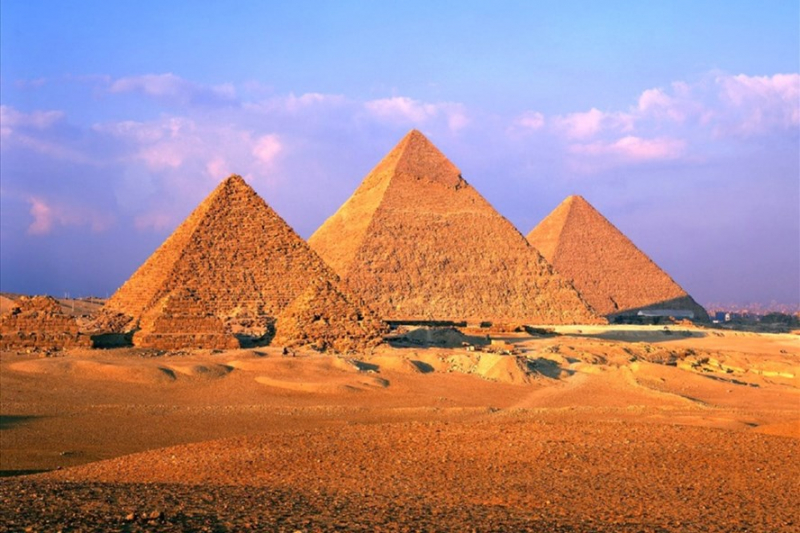The Great Pyramid of Giza

The Great Pyramid of Giza is a defining symbol of Egypt and the last of the ancient Seven Wonders of the World. It is located on the Giza plateau near the modern city of Cairo and was built over a twenty-year period during the reign of the king Khufu (2589-2566 BCE, also known as Cheops) of the 4th Dynasty. The Great Pyramid was the tallest structure made by human hands in the world for over 3,000 years until the Eiffel Tower was completed in Paris, France in 1889 CE.
The Great Pyramid of Giza rises to a height of 479 feet (146 metres) with a base of 754 feet (230 metres) and is comprised of over two million blocks of stone. Some of these stones are of such immense size and weight (such as the granite slabs in the King's Chamber) that the logistics of raising and positioning them so precisely seems an impossibility by modern standards. Although many theories persist as to the purpose of the pyramid, the most widely accepted understanding is that it was constructed as a tomb for the king. Exactly how it was built, however, still puzzles people in the modern day. The theory of ramps running around the outside of the structure to move the blocks into place has been largely discredited. So-called "fringe" or "New Age" theories abound, in an effort to explain the advanced technology required for the structure, citing extra-terrestrials and their imagined frequent visits to Egypt in antiquity. These theories continue to be advanced in spite of the increasing body of evidence substantiating that the pyramid was built by the ancient Egyptians using technological means which, most likely, were so common to them that they felt no need to record them. Still, the intricacy of the interior passages, shafts, and chambers (The King's Chamber, Queen's Chamber, and Grand Gallery) as well as the nearby Osiris Shaft, coupled with the mystery of how the pyramid was built at all and its orientation to cardinal points, encourages the persistence of these fringe theories.
Another enduring theory regarding the monument's construction is that it was built on the backs of slaves. Contrary to the popular opinion that Egyptian monuments in general, and the Great Pyramid in particular, were built using Hebrew slave labor, the pyramids of Giza and all other temples and monuments in the country were constructed by Egyptians who were hired for their skills and compensated for their efforts. No evidence of any kind whatsoever - from any era of Egypt's history - supports the narrative events described in the biblical Book of Exodus. Worker's housing at Giza was discovered and fully documented in 1979 CE by Egyptologists Lehner and Hawass but, even before this evidence came to light, ancient Egyptian documentation substantiated payment to Egyptian workers for state-sponsored monuments while offering no evidence of forced labor by a slave population of any particular ethnic group. Egyptians from all over the country worked on the monument, for a variety of reasons, to build an eternal home for their king which would last through eternity.
Nation: Egypt
Details: https://www.worldhistory.org/Great_Pyramid_of_Giza/










